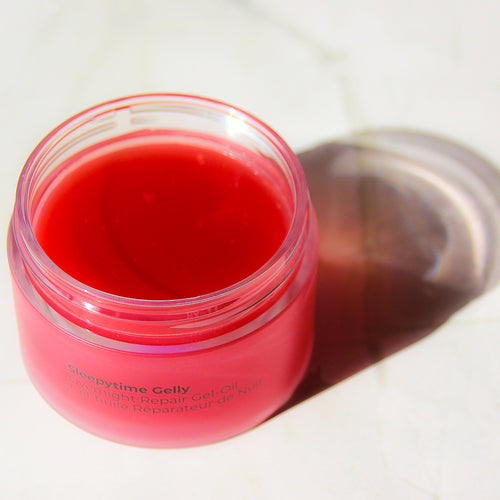Saffron, often referred to as "red gold," is not just a culinary staple but also a valuable component in skincare. This luxurious spice, derived from the stigmas of the Crocus sativus flower, is renowned for its vibrant color and distinctive flavor, and its use in skincare dates back to ancient civilizations. Today, both traditional practices and modern research highlight saffron's ability to improve skin brightness and reduce pigmentation.
A Rich History in Ayurveda
In the ancient Indian healing system of Ayurveda, saffron has been celebrated for its ability to balance the doshas (body energies): Vata, Pitta, and Kapha. These energies are believed to govern all physical and mental processes, impacting overall health and skin condition. Ayurvedic practitioners have used saffron to prepare face packs, drinks, and medicinal pastes, leveraging its properties to enhance skin radiance and texture.
Scientific Studies on Saffron
Recent studies have highlighted saffron’s potential in various skin applications. A study published in the Journal of Ethnopharmacology focused on crocin's ability to inhibit the tyrosinase enzyme, confirming its role in managing hyperpigmentation. Another research initiative noted saffron's anti-inflammatory properties, which are beneficial for conditions like acne, eczema, and psoriasis.
Furthermore, saffron has been examined for its antioxidative properties, which are crucial in defending the skin against oxidative stress, a key factor in premature aging. These studies provide a scientific basis for saffron's historical use and present a compelling argument for its inclusion in modern skincare routines.
Saffron for Skin Brightening and Pigmentation
One of the most cherished benefits of saffron is its ability to brighten the skin. This is not just a superficial effect; saffron contains high levels of vitamins B1, B2, B3, and B6, minerals like potassium and magnesium, and antioxidants, which collectively contribute to its skin-enhancing properties. These nutrients help improve blood circulation to the skin, promoting healthier, more vibrant skin. The enhanced circulation also aids in delivering nutrients to the skin cells, revitalising the skin from within, which results in a natural glow and luminosity.
The active compounds in saffron also assist in the healing process of the skin. It’s particularly effective in healing scars and wounds, reducing oxidation stress in skin cells, and fighting inflammation—all of which can significantly improve the overall appearance and health of the skin.
Incorporating Saffron in Skincare
Integrating saffron into your skincare routine can be done in several effective ways. Here are a few methods to harness the full potential of this spice:
- Saffron Infused Toner: Soak a few strands of saffron in rose water overnight and use it as a toner. This combination not only soothes the skin but also gives it a vibrant boost due to the toning effects of rose water and the brightening effects of saffron.
- Saffron Face Serum: Use a daily face serum that is able to penetrate into the deeper layers of the skin and deliver saffron's active compounds to help fade dark spots and improve skin radiance.
- Saffron Face Mask: Mix saffron strands with sandalwood powder, and milk to create a potent face mask that reduces pigmentation and brightens the skin. Apply this mask once a week for visible results
DIY Saffron Skincare Recipes
Creating DIY masks is a great way to utilise saffron's benefits. Here are a couple of masks that you can try at home:
1. Saffron and Honey Soothing Mask
Purpose: Moisturises and soothes the skin, suitable for all skin types.
Instructions:
- Soak the saffron threads in milk for a few hours.
- Mix in honey until a consistent paste is formed.
- Apply to the face and neck, leave for 15-20 minutes.
- Rinse with lukewarm water and pat dry.
2. Saffron and Sandalwood Brightening Mask
Purpose: Aids in skin brightening and helps reduce pigmentation.
Instructions:
- Soak saffron in rose water overnight.
- Mix in sandalwood powder to form a smooth paste.
- Apply evenly on the face, allowing it to sit for 20 minutes.
- Wash off with cool water and follow up with a moisturiser.
Safety and Considerations
- Patch Test: Always perform a patch test before trying new skincare ingredients.
- Usage Frequency: Limit the use of saffron-infused products to a few times a week to prevent skin irritation.
Summary
Saffron's blend of traditional acclaim and scientifically backed benefits makes it an exceptional ingredient for those seeking natural skincare solutions. Whether incorporated through dietary means or topical applications, saffron can significantly enhance skin health, offering a natural glow and reduced pigmentation. By integrating saffron into your skincare routine through easy DIY masks or high quality saffron serums, you can experience its powerful effects firsthand.




